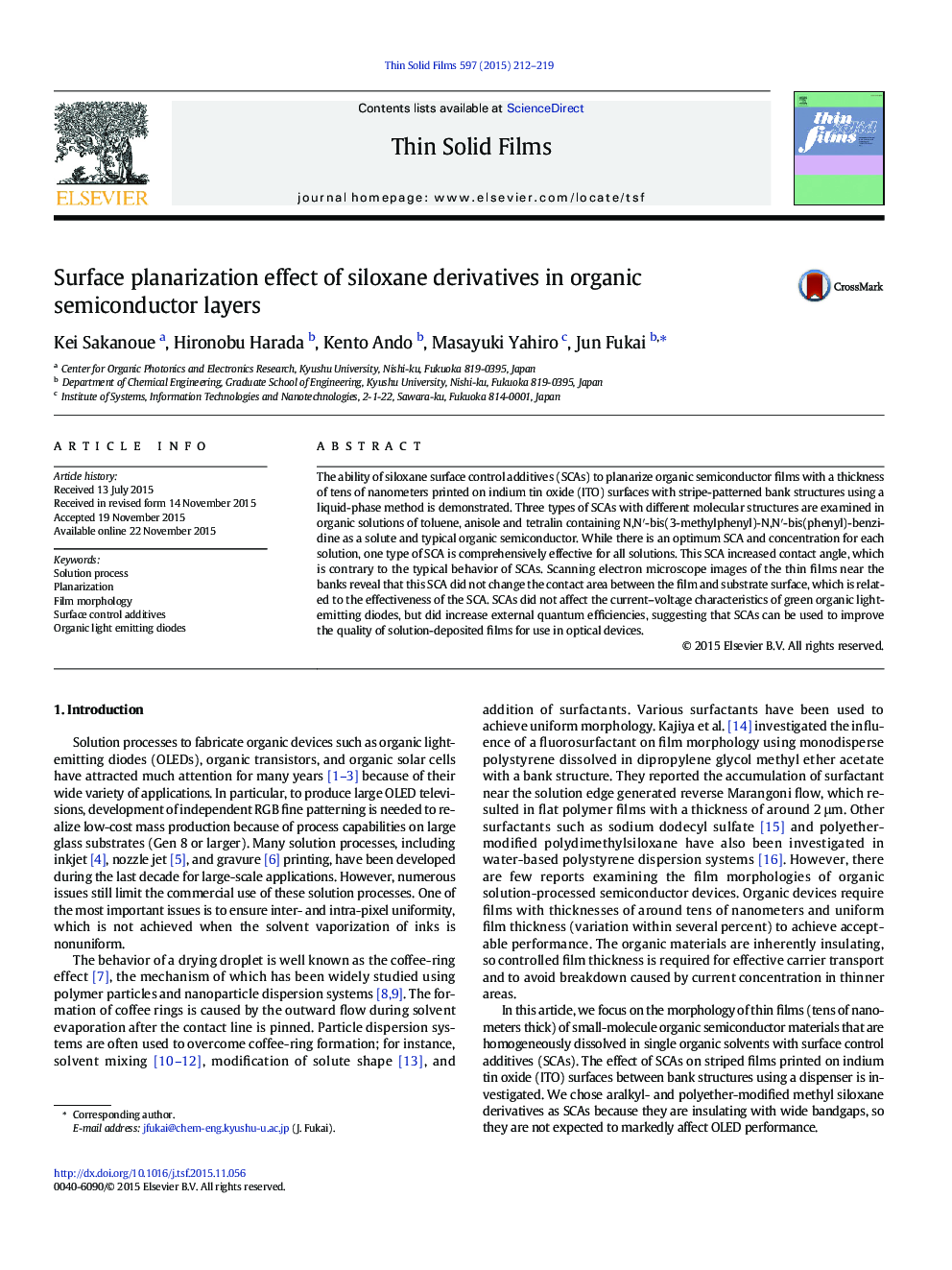| Article ID | Journal | Published Year | Pages | File Type |
|---|---|---|---|---|
| 1664231 | Thin Solid Films | 2015 | 8 Pages |
•Surface control additives planarize organic semiconductor films coated on surfaces.•The most effective additive increases the contact angle of solutions during drying.•The effect of additives is deduced from solutal Marangoni forces.•Additives have little effect on organic light-emitting diode performance.
The ability of siloxane surface control additives (SCAs) to planarize organic semiconductor films with a thickness of tens of nanometers printed on indium tin oxide (ITO) surfaces with stripe-patterned bank structures using a liquid-phase method is demonstrated. Three types of SCAs with different molecular structures are examined in organic solutions of toluene, anisole and tetralin containing N,N′-bis(3-methylphenyl)-N,N′-bis(phenyl)-benzidine as a solute and typical organic semiconductor. While there is an optimum SCA and concentration for each solution, one type of SCA is comprehensively effective for all solutions. This SCA increased contact angle, which is contrary to the typical behavior of SCAs. Scanning electron microscope images of the thin films near the banks reveal that this SCA did not change the contact area between the film and substrate surface, which is related to the effectiveness of the SCA. SCAs did not affect the current–voltage characteristics of green organic light-emitting diodes, but did increase external quantum efficiencies, suggesting that SCAs can be used to improve the quality of solution-deposited films for use in optical devices.
